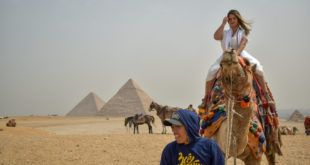Situated on the Atlantic Coast in Angola, Luanda is the national capital that has emerged as one of the most successful cities in Africa. Despite having experienced decades of devastating conflicts, the city has undergone a massive construction boom in the 21st Century. Its newly acquired peace and state of stability has attracted many foreign companies that have invested in the country. In addition, the government also gets a lot of revenue from the oil reserves and diamonds alongside other many natural resources. As a result, there has been great local investment by the government in Luanda in the efforts of upgrading the slums and modernizing the infrastructure especially roads and airports.
 One of the major attraction sites in Luanda is the Agostinho Neto Mausoleum that you definitely can’t miss upon your arrival in the city. This mausoleum is a dedication to the first president who played a major role during the struggle for independence in Angola. The Fortaleza de Sao Miguel used to be the capital for administration in Angola during the colonial era and serves as a great historical city today.
One of the major attraction sites in Luanda is the Agostinho Neto Mausoleum that you definitely can’t miss upon your arrival in the city. This mausoleum is a dedication to the first president who played a major role during the struggle for independence in Angola. The Fortaleza de Sao Miguel used to be the capital for administration in Angola during the colonial era and serves as a great historical city today. The National Museum of Slavery is built at the spot that was used for holding slaves and consists of a chapel and cannon. The stone front without description in the chapel is quite fascinating as well as other objects of interest to tourists such as shackles, a whip, and stocks. The National Museum of Natural History in Luanda has thousands of animal species including birds, fish, insects, and crustaceans with most of them being endangered species.
The National Museum of Slavery is built at the spot that was used for holding slaves and consists of a chapel and cannon. The stone front without description in the chapel is quite fascinating as well as other objects of interest to tourists such as shackles, a whip, and stocks. The National Museum of Natural History in Luanda has thousands of animal species including birds, fish, insects, and crustaceans with most of them being endangered species. The National Museum of Anthropology educates locals and foreigners about the culture and history of Angola and features traditional displays of traditional sculptures, masks, weaponry, tools, clothing, jewelry, musical instruments, and tools. The Igreja Nossa Senhora do Populo is one of the most treasured historical and cultural sites in Angola that is largely recognized as the first local Anglican Church. The structure dates back in 1482 and has a unique interior and Baroque infrastructure that attracts many tourists. Other notable attractions are such as the Humbi – Humbi Art Gallery, Igreja da Nazare, and Igreja do Carmo that are tourist jewels in Luanda.
The National Museum of Anthropology educates locals and foreigners about the culture and history of Angola and features traditional displays of traditional sculptures, masks, weaponry, tools, clothing, jewelry, musical instruments, and tools. The Igreja Nossa Senhora do Populo is one of the most treasured historical and cultural sites in Angola that is largely recognized as the first local Anglican Church. The structure dates back in 1482 and has a unique interior and Baroque infrastructure that attracts many tourists. Other notable attractions are such as the Humbi – Humbi Art Gallery, Igreja da Nazare, and Igreja do Carmo that are tourist jewels in Luanda. Tourists are also advised to spare some time and drive to the beautiful local bay and you must also visit the Benfica market that seems to sell everything you can imagine ranging from tourist guidebooks to animal skins, ivory, and perfume. Mussulo enjoys a reputation of being the best and most attractive beach in Luanda. Football and Basketball are the two main sports in the country and you might be lucky to find a match taking place in Luanda.
Tourists are also advised to spare some time and drive to the beautiful local bay and you must also visit the Benfica market that seems to sell everything you can imagine ranging from tourist guidebooks to animal skins, ivory, and perfume. Mussulo enjoys a reputation of being the best and most attractive beach in Luanda. Football and Basketball are the two main sports in the country and you might be lucky to find a match taking place in Luanda. The safety of Luanda city can be said to be average and most importantly, venturing into the slums would be a simple way of inviting trouble. Make sure that you also stay in your hotel room at night as violent crimes are not a surprise in Luanda. There are also many beggars in the city borrowing money and you need to stay away from them as many more will surround you if you appear to be very kind. Be warned, police in Luanda are very corrupt.
The safety of Luanda city can be said to be average and most importantly, venturing into the slums would be a simple way of inviting trouble. Make sure that you also stay in your hotel room at night as violent crimes are not a surprise in Luanda. There are also many beggars in the city borrowing money and you need to stay away from them as many more will surround you if you appear to be very kind. Be warned, police in Luanda are very corrupt. Tourist Destinations World Travel Guides
Tourist Destinations World Travel Guides


